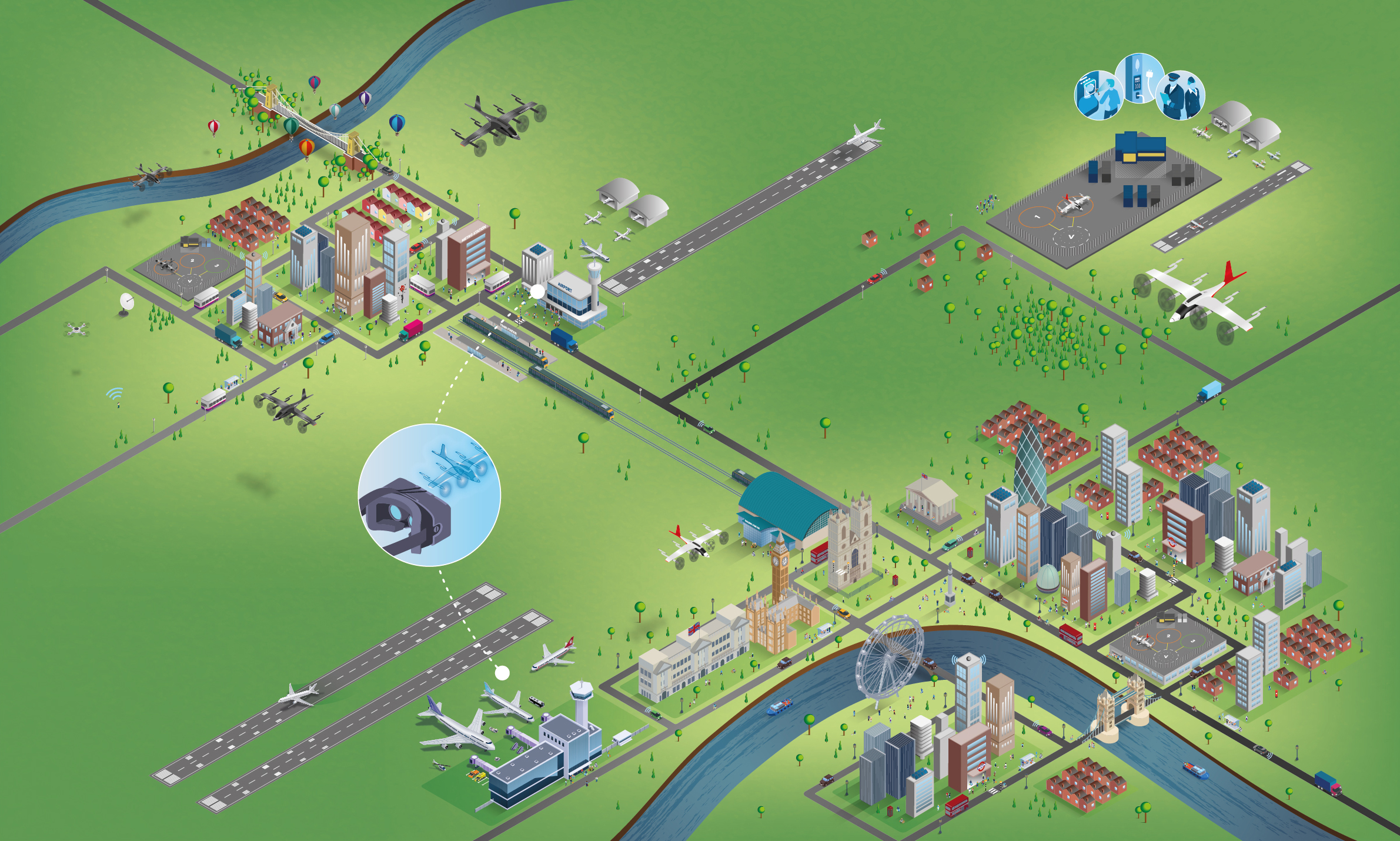Advanced Mobility Ecosystem Consortium
The UK Government’s Future Flight Challenge aims to revolutionise the way we travel and find new, greener ways to fly.
A group of leading British aviation, technology and transport companies have formed a consortium to answer the challenge, and explore the future of mobility.
AtkinsRéalis, Vertical Aerospace, Skyports and NATS, along with Connected Places Catapult and leading academic institutions Cranfield University and WMG, University of Warwick, are working together to develop technology and infrastructure to significantly accelerate the introduction of Advanced Air Mobility (AAM) in the UK.
Accelerating AAM
The project is demonstrating the feasibility of a UK AAM ecosystem using Vertical Aerospace’s emission-free VX4 eVTOL aircraft. Physical flights will take place at the Living Lab vertiport in Bicester Motion; while virtual simulation flights in late 2023 demonstrated urban connectivity between London City and Bristol airports.
These demonstrations are exploring key aspects of the passenger journey, vehicle operation, airspace navigation, ground charging, security provision and local stakeholder engagement. Heathrow, Bristol Airport, Skyports and NATS, the UK’s national air navigation service provider, collaborated to deliver the physical and digital infrastructure to facilitate these missions through a complex airspace environment.
The two-year project is overseen by aerospace engineering experts AtkinsRéalis as consortium lead. Other nations are racing to establish their own AAM ecosystems – this project ensures the UK will be amongst the leaders in this new decarbonised form of transport.

Benefits of Advanced Air Mobility
AAM offers a new form of travel, enabling cost-effective connectivity into congested urban areas and across regions under-served by existing infrastructure.
The UK Government Future Flight Challenge forecast that the introduction of AAM services would increase UK GDP by 1.8% by 2030 and support the government’s Levelling Up and Net Zero agendas, reflecting the productivity and wider economic benefits of increased connectivity.
This is an exciting leap forward for AAM, bringing together experts from across the industry to maintain the UK’s leading position in the future of aviation and moving us closer to commercial operations that will connect regions and contribute to the UK’s net zero targets.
JAMES RICHMOND, HEAD OF ADVANCED AIR MOBILITY AT ATKINSRÉALIS
Novel infrastructure
Skyports built and is operating a 'Living Lab' vertiport, to create a testbed for ground, passenger and air operations for the project duration. This centre of innovation has helped to materially accelerate the development of AAM services, and to establish the UK as a leader in the design and operation of vertiport infrastructure.
Just as airports are critical to commercial aeroplane travel, vertiports are critical to AAM. Our Living Lab will be a central component of the consortium, enabling Skyports and partners to demonstrate end-to-end operations and test the complexities of developing a commercially viable AAM network in the UK.
Duncan Walker, CEO of Skyports
New regional air connectivity
Vertical is not flying solo. We are building the best industrial and commercial partner ecosystems and want the UK to lead the electric aviation and AAM revolution. This consortium will help prove how we can deliver safer, cleaner and quieter air travel with the VX4.
ANDREW MACMILLAN, DIRECTOR OF STRATEGY AT VERTICAL AEROSPACE
Effective airspace management is crucial for integrating new aircraft and embracing future technology-enabled services. Through this project, NATS is developing advanced airspace management concepts and tools to shape the future of airspace services, and embrace technological advancements that ensure safety, efficiency and innovation work together harmoniously while accommodating evolving needs.
GUY ADAMS, NATS COMMERCIAL DIRECTOR